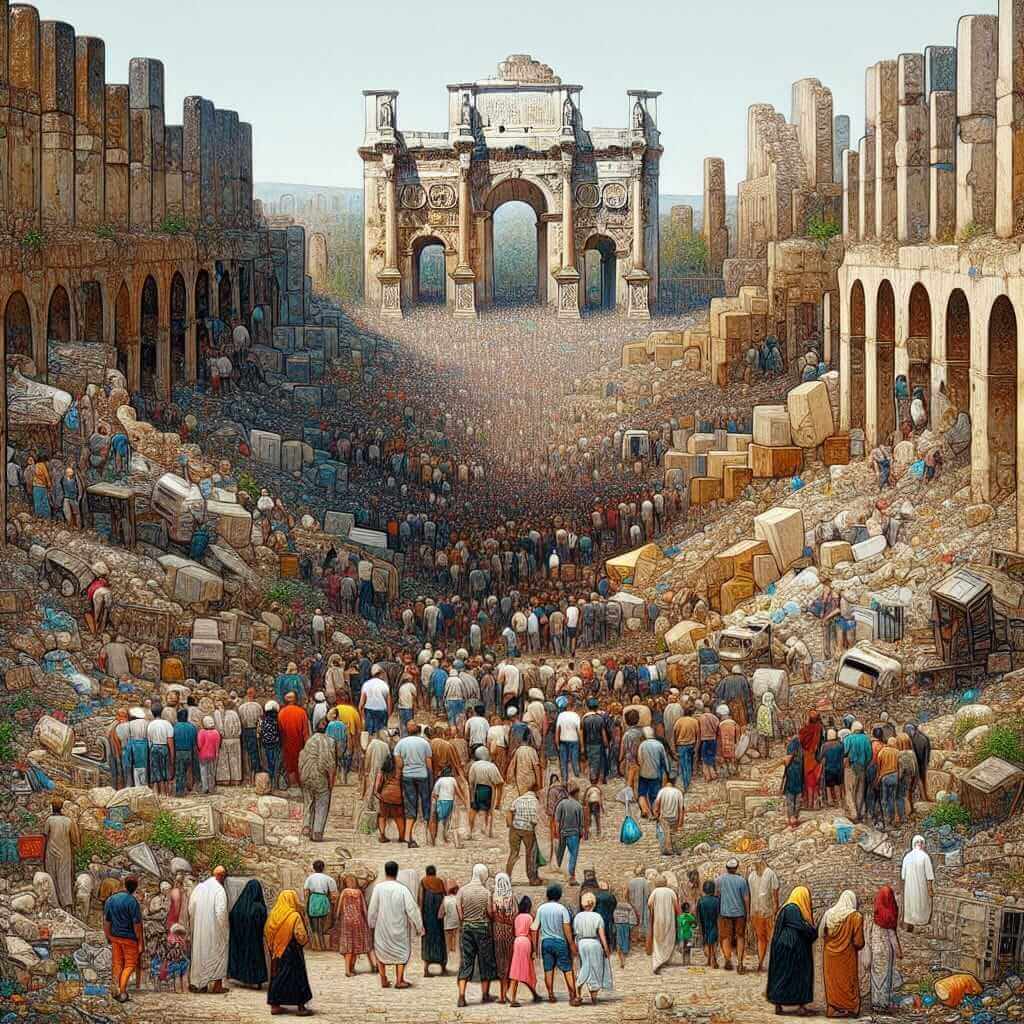The IELTS Reading section is designed to test a wide range of reading skills, which include understanding gist, reading for details, recognizing the writer’s opinion, attitude and purpose, and following arguments. One of the frequently covered topics is “The consequences of mass tourism on historical sites.” This subject has been recurrent in past IELTS exams and due to its relevance and topicality, it may appear again in future tests.
Understanding this topic thoroughly not only enhances your reading skills but also expands your knowledge regarding environmental and cultural issues, which can be useful across all sections of the IELTS exam. In this article, we will provide a detailed Reading practice test, analysis, and valuable strategies to help you score higher.
Reading Passage
The Consequences of Mass Tourism on Historical Sites
Tourism plays a crucial role in the economic development of many countries. However, the influx of tourists to historical and cultural sites has brought about a myriad of challenges and consequences. One significant impact is the physical degradation of heritage sites. The sheer number of visitors often leads to wear and tear of historic structures, monuments, and locations, resulting in significant restoration and maintenance costs.
Environmental Degradation
Another consequence is environmental degradation. Historical sites often include not only man-made structures but also natural landscapes. The trampling of vegetation, littering, and pollution from increased human activity pose significant threats to these environments. For instance, the Great Wall of China has suffered from both physical damage and environmental pollution, which has endangered its structural integrity.
Cultural Impacts
Cultural implications are another profound effect of mass tourism. The commercialization of cultural heritage can lead to the loss of authenticity. Traditional customs, practices, and daily lives of local communities often change to cater to tourists, leading to cultural dilution. In Venice, the surge of tourists means that more and more local shops are replaced by souvenir stores, and traditional Venetian culture is gradually eroding.
Economic Consequences
Economically, while tourism generates significant revenue, it also brings about issues of economic disparity. Many historical sites are located in developing or economically disadvantaged regions. The influx of tourists can inflate prices and create economic dependence on tourism. This may lead to neglect of other potential economic sectors, resulting in a lack of diversification and financial instability.
Preservation Efforts
Efforts to mitigate the negative effects of mass tourism on historical sites include the enforcement of strict visitor regulations, restoration projects, and the implementation of sustainable tourism practices. Governments and organizations globally recognize the importance of balancing tourist activity with the preservation of cultural heritage for future generations.

Questions
Multiple Choice
-
What is one significant consequence of mass tourism on historical sites?
A. Economic improvement
B. Physical degradation
C. Cultural authenticity
D. Natural enhancement -
Which of the following is an example of environmental degradation caused by mass tourism?
A. Increased local revenue
B. Loss of traditional customs
C. Pollution and trampling of vegetation
D. Creation of souvenir stores in Venice
True/False/Not Given
- Traditional shops in Venice are being replaced by souvenir stores because of tourism.
- The Great Wall of China has not suffered from environmental pollution due to strict regulations.
Summary Completion
Complete the summary using the list of words: (commercialization, physical, tourism, economic, traditional, revenue)
- __ generates significant __ in many countries. However, it also causes __ impacts such as cultural dilution and loss of __ practices.
Answers and Explanations
-
B. Physical degradation
- Explanation: The text states that the sheer number of visitors often leads to wear and tear of historic structures.
-
C. Pollution and trampling of vegetation
- Explanation: The text mentions environmental degradation through trampling of vegetation and pollution from increased human activity.
-
True
- Explanation: The text notes that in Venice, local shops are increasingly replaced by souvenir stores.
-
Not Given
- Explanation: The text mentions environmental pollution at The Great Wall of China but does not state the effects of strict regulations.
-
Tourism, revenue, cultural, traditional
- Explanation: The summary completion involves understanding that tourism generates revenue but also leads to cultural impacts and loss of traditional practices.
Common Mistakes
- Misinterpreting True/False/Not Given questions; always refer precisely to the text.
- Overlooking keywords in summary completion, which are often central to understanding the main ideas.
Vocabulary
- Degradation (noun): The reduction of quality or condition of something.
- Authenticity (noun): The quality of being genuine or true to the original.
- Dilution (noun): The action of making something weaker in force, content, or value.
- Disparity (noun): A great difference.
- Sustainable (adjective): Able to be maintained at a certain rate or level.
Grammar Focus
- Passive Voice: The Great Wall of China has suffered from both physical damage and environmental pollution.
- Structure: Subject + auxiliary verb (has) + past participle (suffered)
- Example: The museum was built in 1890.
Advice for High IELTS Reading Scores
- Skim the text first to grasp the main ideas, then read the questions.
- Highlight keywords in the questions to find relevant information quickly.
- Practice various question types to become familiar with different question styles.
- Time management is crucial; practice under timed conditions to improve speed and efficiency.
By thorough preparation and understanding of common topics such as the consequences of mass tourism on historical sites, you will be better equipped to tackle the Reading section of the IELTS exam. Happy studying!